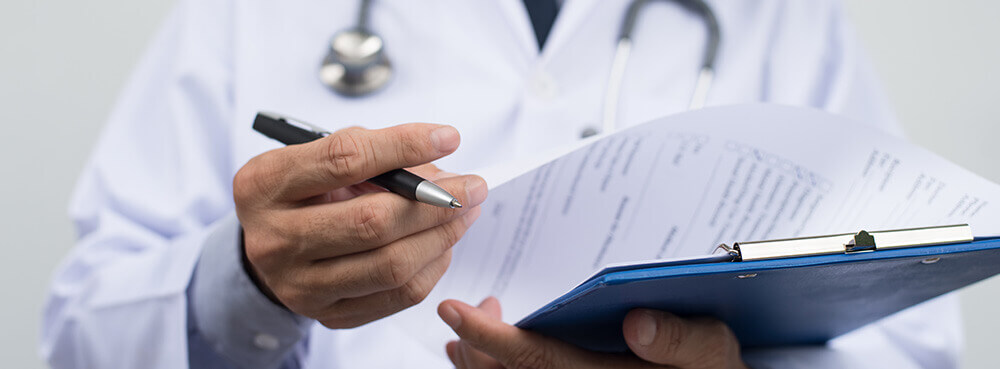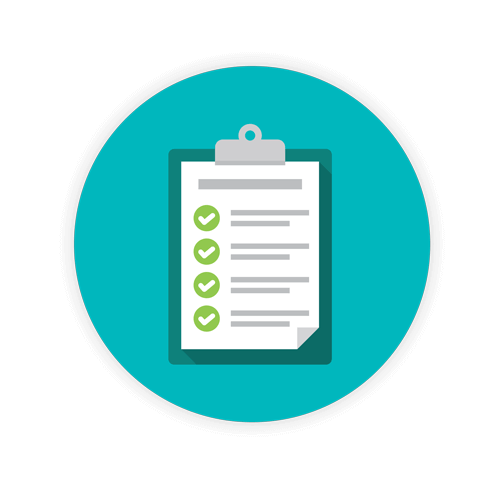Hospital Waste Checklist: Do You Have One

Does your hospital facility have an up-to-date and compliant checklist for hospital waste management? Do your hospital’s waste management processes achieve standards in regard to duty of care? Any facility that generates offensive, clinical or healthcare waste of any kind should have a waste management checklist to manage and maintain compliance issues.
Hospital waste is classified as any type of medical waste generated during the diagnosis, treatment, or immunization of human beings (or animals), as well as any research performed in a hospital environment. Such waste has a potential for harming or otherwise infecting or injuring hospital employees, patients, or visitors. It is the hospital’s responsibility to ensure safety to people as well as the environment by focusing on proper and compliant waste management.
Explore our Approach to Hospital Waste Management
What to cover in a hospital waste checklist
Hospitals not only produce but manage a number of different classifications of waste that include pharmaceutical, chemical, infectious, and sharps wastes. Maintaining efficient waste management is achieved through clear guidelines, thorough training of employees, and access to best management practices for every department within the hospital environment.
Medical waste has the potential to be hazardous, toxic, and sometimes even deadly. Such waste poses serious risks for humans and the environment if not properly segregated, treated, and disposed of. Hospitals can reduce risk by adhering to several best practices such as:
- Staying well-informed regarding regulations
- Categorising and segregating waste into the proper colour-coded containers and waste bins. For example, does everyone on your staff know what colour waste bins are appropriate for medicines or unused drugs? Does your nursing staff know what colour clinical or infectious waste should be placed in?
- Monitoring healthcare waste practices in your facility to ensure categories are specifically defined.
A number of key points to develop when creating a hospital check list include regular updating, waste management practices that cover not only safety compliance within the facility, but environmental compliance.
About compliance
Compliance management requires an establishment of controls to achieve certain objectives. For example:
- Having a waste policy in place that specifies objectives, responsibilities, and procedures for safe healthcare waste management.
- Training is essential if policies are to be effective. Educate and empower your staff to comply with your facility medical waste policies.
- Incident management is also an important aspect of your hospital waste checklist and should be specific in regard to measures for dealing with accidents or spillages as well as internal and external reporting and documentation.
- Documentation is a vital part of waste management compliance, especially waste transfer documentation and associated record-keeping requirements.
- Regular auditing to ensure that policies and procedures are in place and are followed through with structured compliance checks.
Your hospital waste management checklist should not be ignored nor underestimated by staff. On the other hand, having the checklist doesn’t guarantee that your employees are compliant with governmental guidelines. It is your duty of care to ensure that your facility is dedicated to protecting not only your employees and patients, but public health and the environment.
Additional components of a medical waste management checklist
The benefits of a medical waste management and monitoring checklists ensures maintenance of standards and compliance. For example, your hospital waste monitoring checklist should facilitate routine walk-throughs. Note items, practices, or areas that may need extra attention or those that are non-compliant. The checklist also enables you to record additional observations.
A healthcare waste checklist might also be customized based on your hospital’s colour-coding system and conditions of current waste receptacles. For example, are waste bins covered? Are colour-coded waste bins appropriate for applicable areas on the floor or in a ward?
Medical waste management compliance as well as disposal environmental protection aspects of such management should be developed so that employees and waste handlers have a written management plan for liquid medical waste, solid medical waste, and non-hazardous general waste. Compliance with the waste management process should be assigned to specific staff, who should also be equipped with adequate and appropriate supplies and equipment to do so.
Handling issues – Does your healthcare waste policy and checklist outline appropriate handling, collection, and transportation of any type of medical waste within the facility? Are specific policies and practices defined for storage, removal, and emptying of waste containers from different areas of the hospital, i.e. surgical suites, patient rooms, or labs?
Every staff member should be trained in the proper handling of infectious waste and its segregation from non-infectious waste at the point of origin. As such, sharps infectious waste should also be properly disposed of in appropriate containers. Train staff in handling and disposal of unused or non-infectious discarded hypodermic needles as well.
Storage issues – Is your facility’s medical waste appropriately and safely stored (even temporarily), and is it packaged and labelled within the facility prior to disposal? Is it temporarily stored in a designated area that is minimally accessible to visitors, staff, or animals?
If you’re unsure of the latest in governmental regulations, look to the source.

Best practice guidelines for healthcare waste management
Turn to the Department of Health for best practice guidelines for waste segregation and disposal through compliant colour-coding processes. Several resources are available for hospitals looking to devise an updated and compliant waste management checklist. These include but are not limited to:
- Hazardous Waste Guidance – an excellent resource defining the classification of different types of waste, segregation, consignment notes, and waste duty of care codes of practice.
- The Controlled Waste (England and Wales) Regulations 2012 – covering interpretations, and differences between household, industrial, and commercial waste.
- Hazardous Waste Regulations 2005
- Carriage of Dangerous Goods Regulations – with updated changes in force as of February 2020
- Department of Health’s Environment and Sustainability Health Technical Memorandum 07-01: Safe Management of Healthcare Waste
- Health and Safety (sharps instruments and healthcare) Regulations 2013
Medical waste generator responsibility
It is the responsibility of a medical waste generator to ensure safety of healthcare providers as well as the general public and the environment. Daniels Health are experts when it comes to healthcare waste management. We provide efficient, effective, and sustainable solutions for hospital waste management practices. For more information on how we can help you not only maintain compliance, but reduce the volume of medical waste produced, and save money at the same time, call us today.
